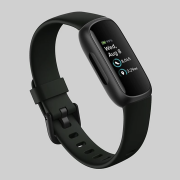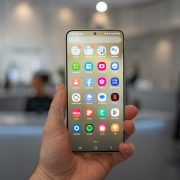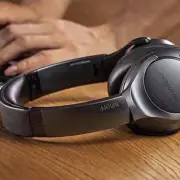Cell Phones have easily surpassed Bubble Gum as the accessory posing the biggest nuisance for educators across the world. But will Android and the open source mobile movement change that?
An MIT professor says yes: “Its portability, context sensitivity, connectivity, and ubiquity… would make it ideal for learning games from elementary school all the way through college.”
That professor is Eric Klopfer and in his recently authored book, Smart Mobs, he argues that, “mobile learning will have roles where it is preferred in education’s future.”
Preferred. That’s right. Forgot your Android phone little Johnny? Don’t have your iPhone little miss Cindy? DETENTION! Alright, perhaps we’re getting a bit ahead of ourselves but lets stop to think about the SIMPLEST way that phones could be integrated into the classroom….
The Calculator.
When Google announced the Top 50 Applications, there didn’t seem to be any distinctly education-based application winners. And in the comments, one user seems to be peddling his own version of an (non-winning) Android calculator – HandyCalc. From the video below, you can see that it does indeed pull off a lot of the same tricks a scientific calculator can:
So why didn’t it make the cut? Well, if you’ve taken a Calculus course in the past decade, you’d know that a must have to complete pretty much any assignment begins with two letters – TI – as in the Texas Instruments scientific calculators that rule the industry. Yup… the same Texas Instruments that is a member of the Open Handset Alliance.
If Texas Instruments isn’t one of the 4 undisclosed ADC winners – they may not have even entered due to the obvious conflict of interest – you can guarantee they are at least working on a calculator application. They would be certifiably insane NOT to have something in the works. Why? We’re glad you asked.
Even the somewhat aged TI-83 calculator runs about $100 at Amazon.com. If you’re a parent looking for a phone for your teen, would you rather have to buy your kid a TI-83 and a seperate cell phone or one single (Android) device that doubles as a phone and graphing calculator? There ya go… Android just saved you $100.
Actually, this could be troublesome for Texas Instruments as their line of TI calculators have become a brand juggernaut and huge revenue generator while competitors are eager to offer open source (and free) alternatives. Sure, they’re listed as part of the OHA for being, “a leading manufacturer of wireless semiconductors,” and not for their calculator prowess, but we think you get the point (or ray, or line segment).
That potential $100 savings is just the tip of the iceberg. A calculator application itself doesn’t utilize the tools inherent in Android that could be the most valuable for educators. Combining the growing multimedia capabilities of mobile devices with user interaction, and real time news/data could provide an outstanding platform for educational tools across all ages and areas of study.
Unfortunately, the proliferation of mobile devices as learning tools will be hindered by two main factors:
- the digital divide
- the total convergence of mobile
The widening gap between the haves and have-nots is already a sore subject in education. Sure, use your Android graphing calculator if you have one, but facilitating an entire class with a prerequisite of an open source mobile device is screaming lawsuit if you’re planning on instituting it at the public level. Private schools could certainly adopt more easily, but what if your family’s chosen carrier doesn’t offer a device with the required applications?
There are plenty of hurdles to jump but the ironic part is the technology creating the potential is also creating more potential hurdles. How much easier can cheating get than having instant access to everyone else in your classroom? With the touch of a button you could send the data in your Android calculator to everyone in the class during the middle of a math class. Actually scratch that – why not just share a document at once and work on the problem together, jotting down notes and plugging in answers for all to see in real-time?
Android will undoubtedly aid the education sector, but how the world will adapt to the incredible potential that Android exhibits can only be predicted.
[Source: RWW]










From this and other recent posts it sounds like you may be coming around to the idea of a truly open platform … like Limo or OpenMoko?
You love to crow that Android will destroy all in it’s path – but seem loth to admit (until recently) that it’s relative closedness could be a problem.
So while it will be up and running relativley quickly (because of the mountain of money and people behind it), Android will be hamstrung by the limitation that vested interests (like TI) will need to be placated: the things they don’t like (eg the calculator you mention) will have to be supressed. The more vested interests you have, the more bland will be the Android offering…. and there seem to be quite a number of vested interests in the handset alliance that could potentially need placating!
Sure Limo and OpenMoko are the tortoises in this race … but they started earlier … and never say never … they may end up in front, and will surely benefit from Android apps being ported to their open platforms.
Why this web site do not have other languages support?
Some android apps for education K12 – http://mclear.co.uk/2009/10/17/top-10-google-android-apps-for-school-education/
Thank you so worked this video
I use Flash Card Maker Pro to teach my 6 year old daughter how to read and do math problems. This is the only flash card application that is optimized for Android pads, tablets, and mobile phones. Flash Card Maker Pro uses advanced gesturing and text-to-speech capability providing a fully interactive experience for users of all ages. This multi-sensory teaching tool uses all pathways of learning (visual, auditory, kinesthetic or seeing, hearing, touching) simultaneously, in order to enhance memory and learning. Use Flash Card Maker Pro on your Android phone or tablet to teach children how to read and do math, to help students study for exams, or to prepare for an upcoming presentation.
Tell me and I forget, show me and I remember, involve me and I understand. (Chinese Proverb)
Recycle your old paper flash cards and download the latest digital version today! Flash Card Maker Pro has the following highlighted features:
1. Create Your Own Flash Cards
2. Share Flash Cards with Other Users
3. Download Decks of Cards from Developer Website
4. Text-to-speech Audio Playback
5. Built-in Study Timer
6. Randomize or Change Order of Playback
7. Swap Question and Answer
8. Change Card Colors and Text Size
9. Navigate Between Cards using Touch Gestures
10. Backup Database to SD Card
thank you very much for this post also for video. Great information!